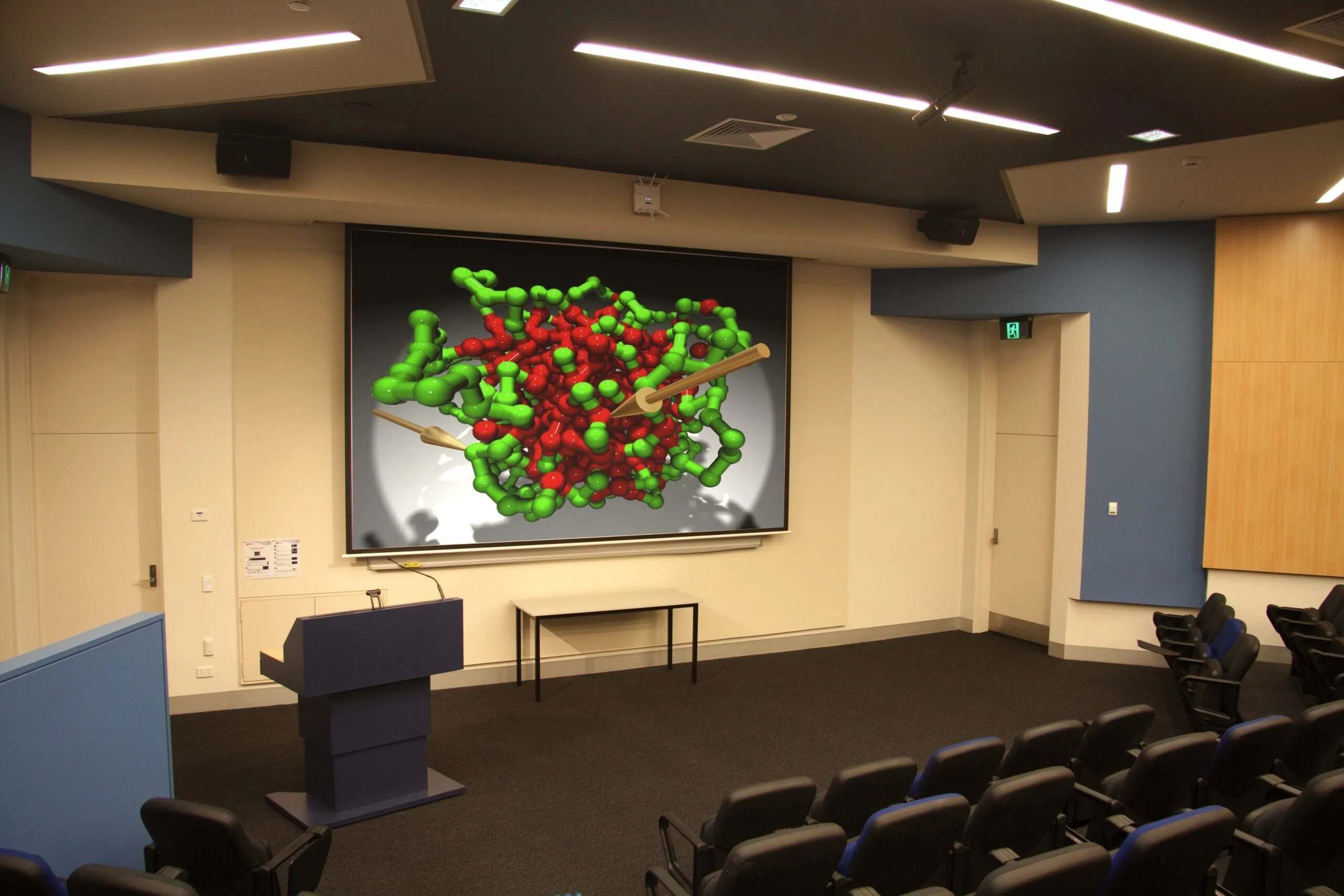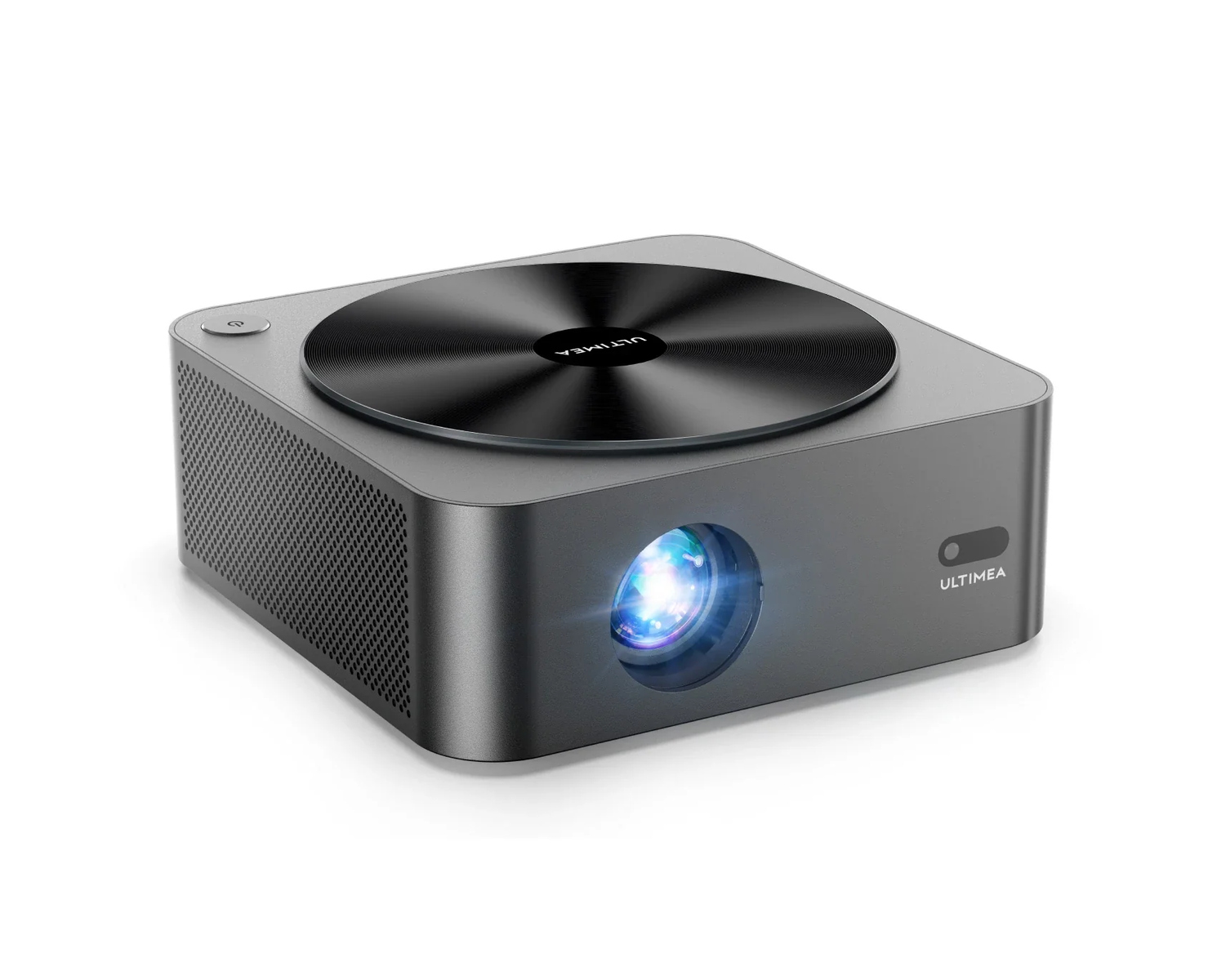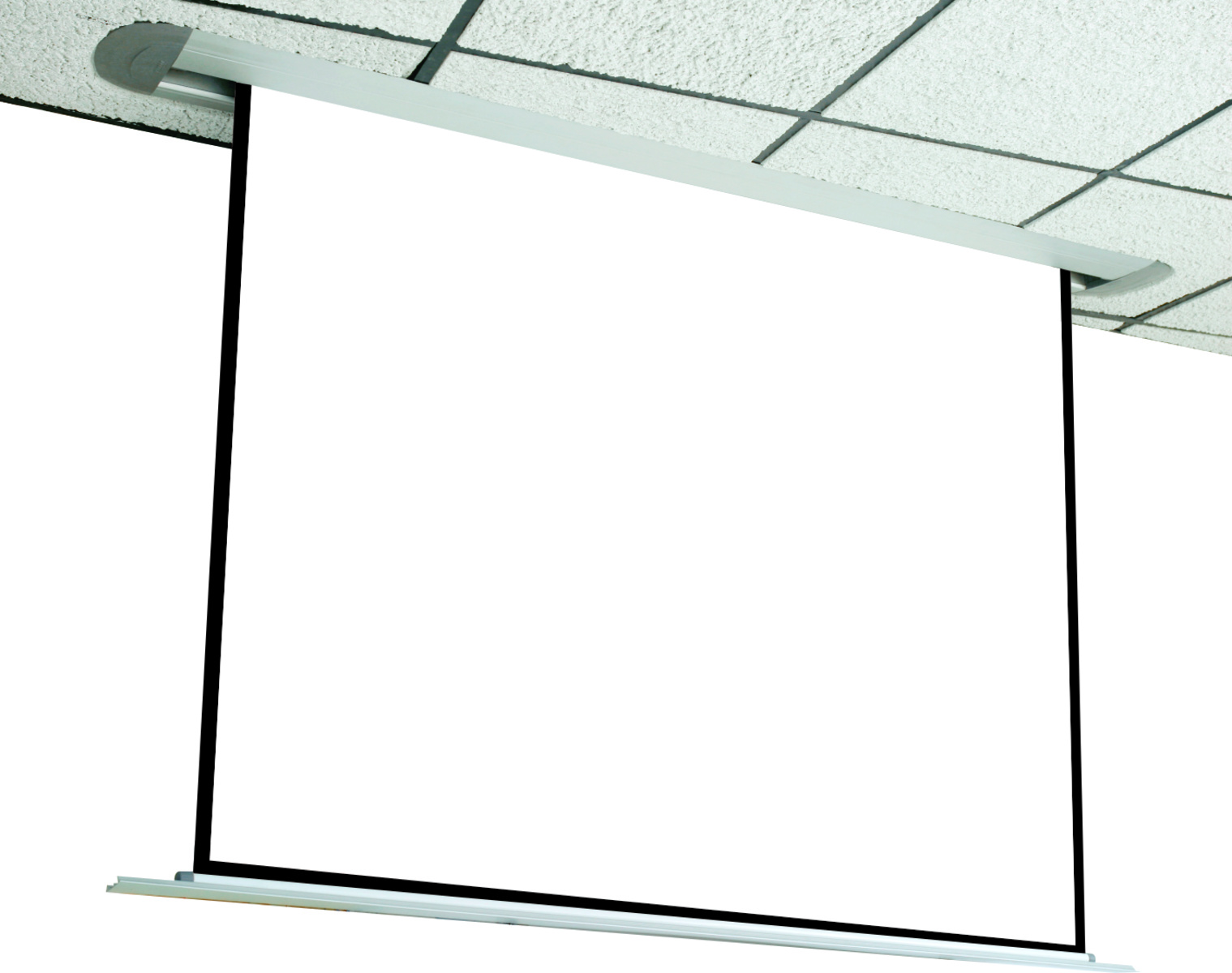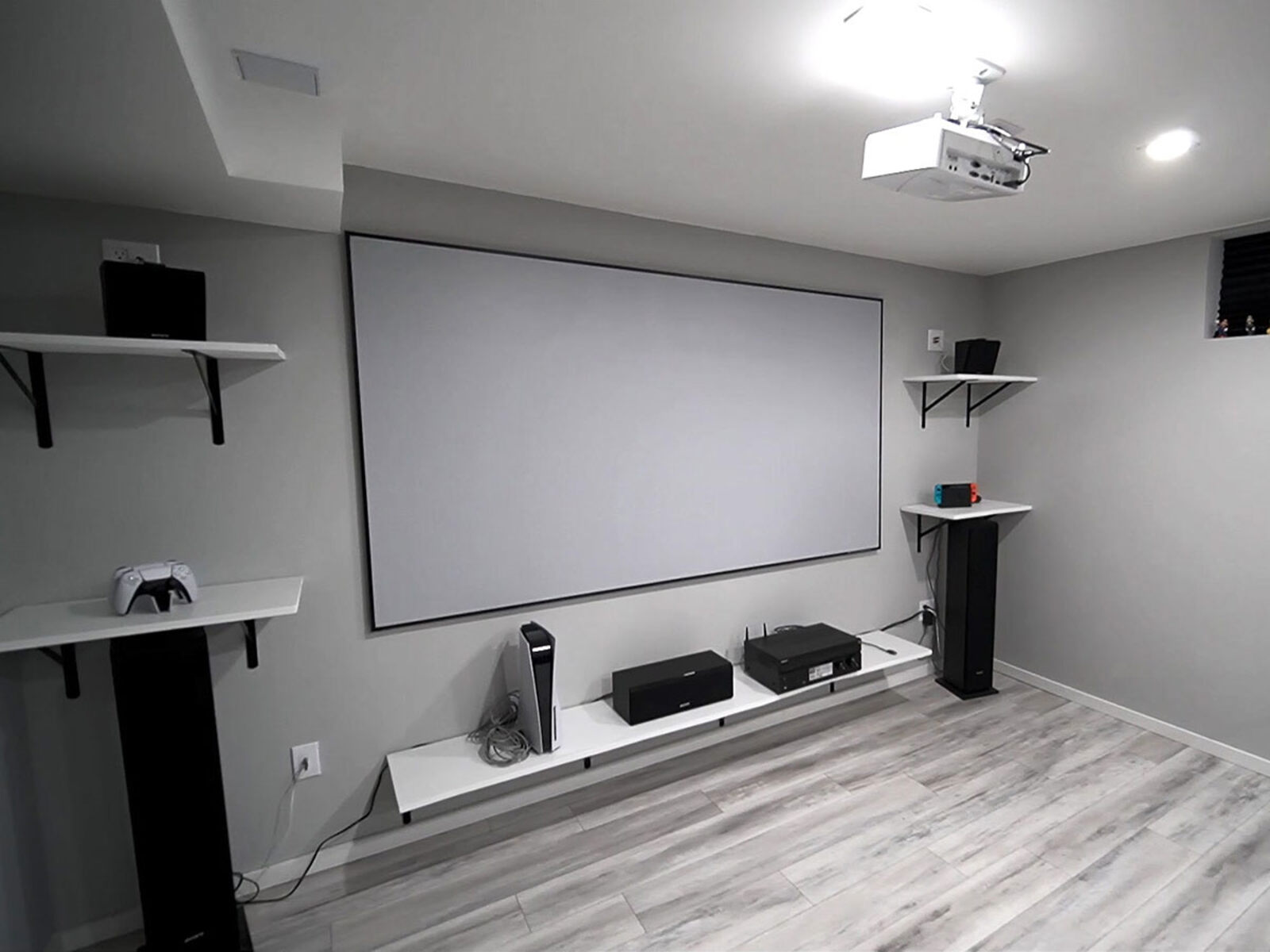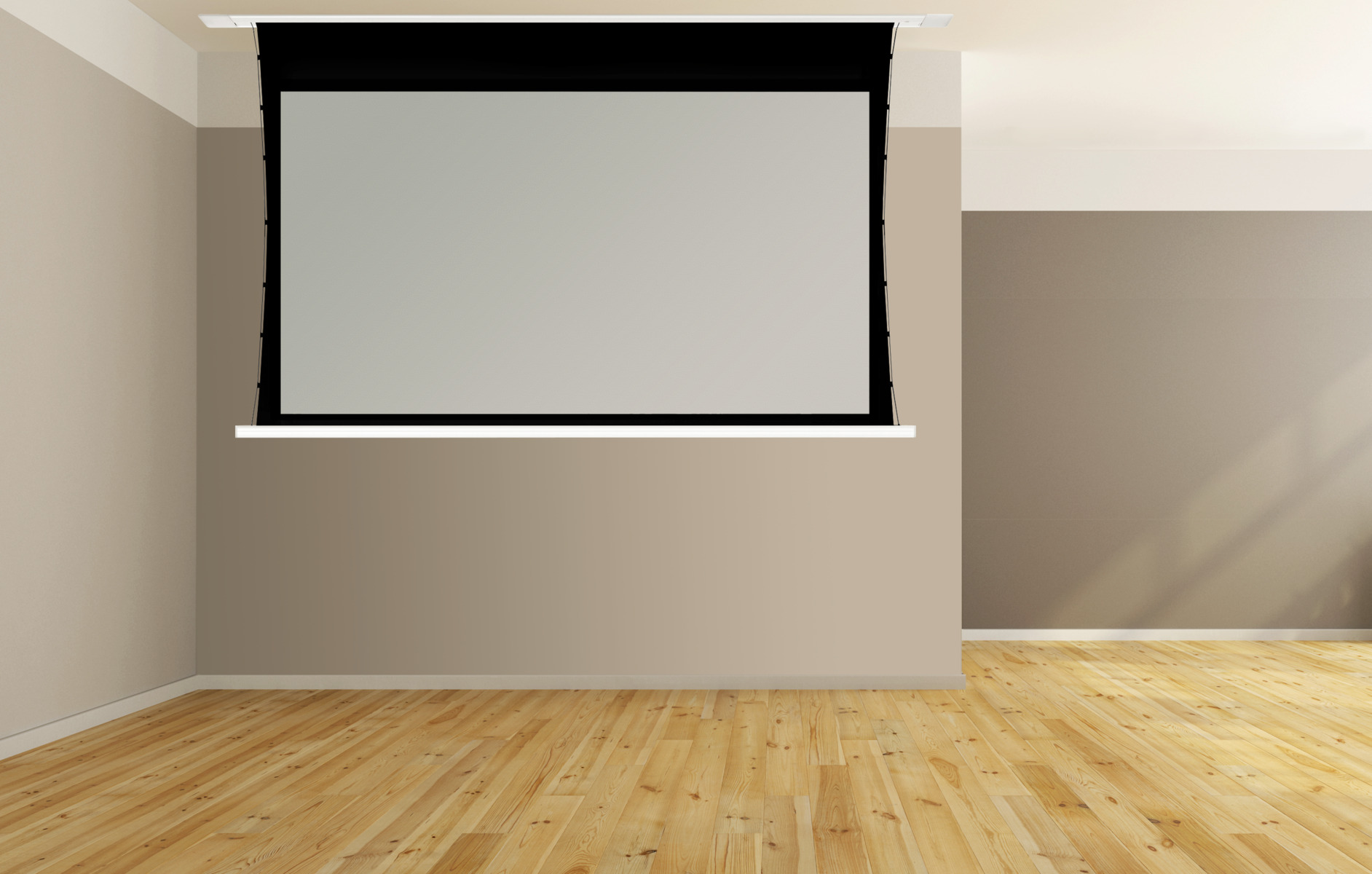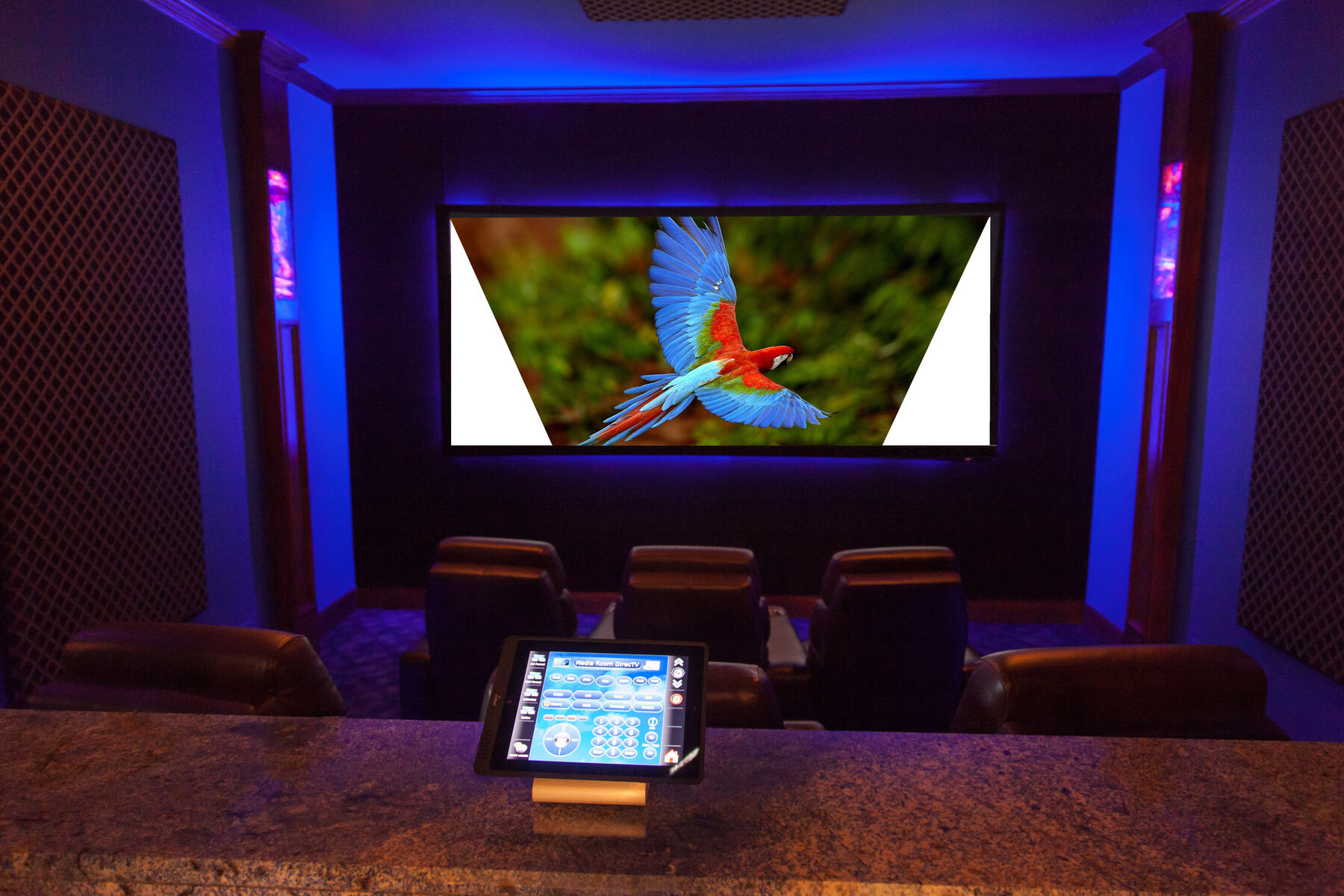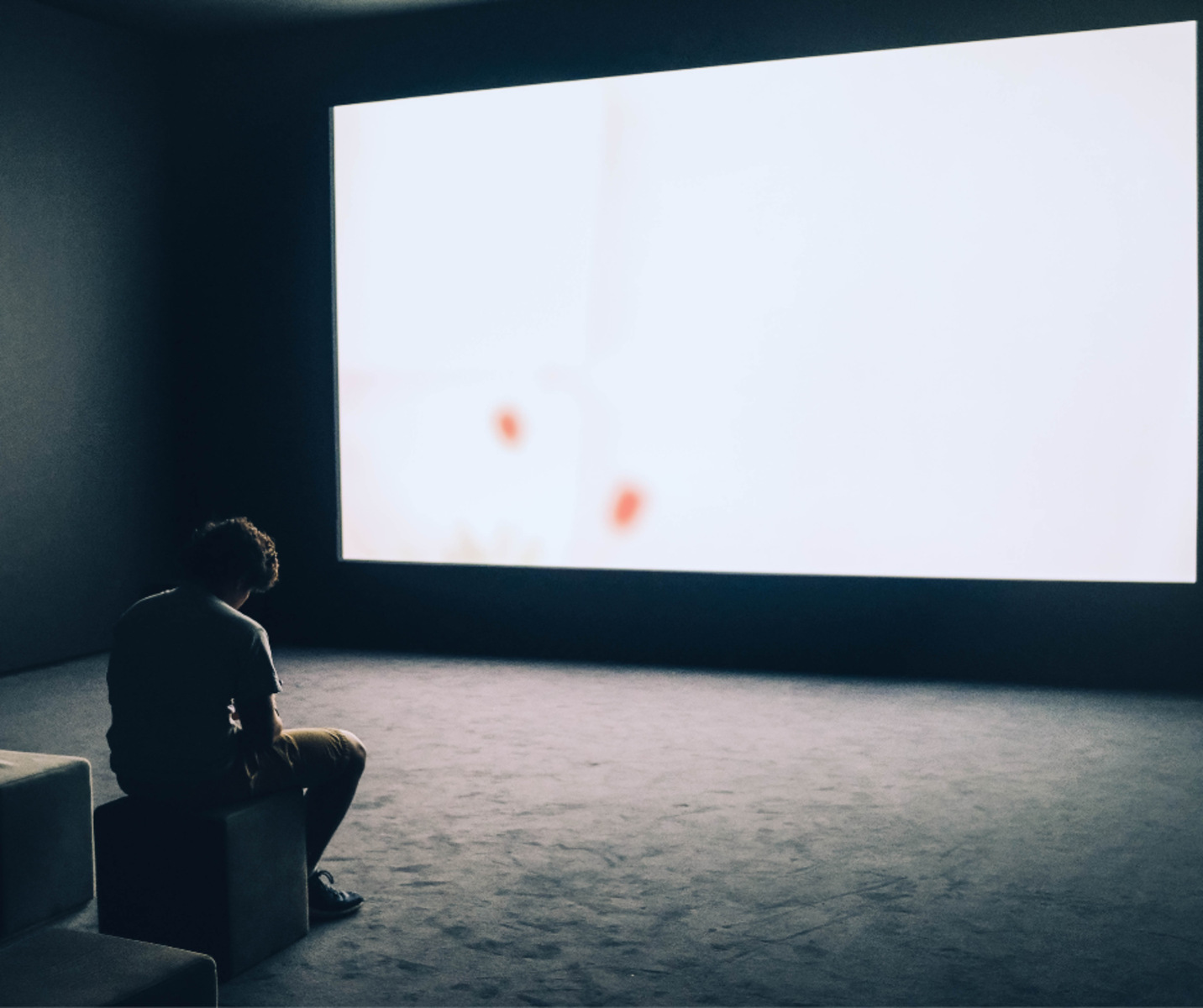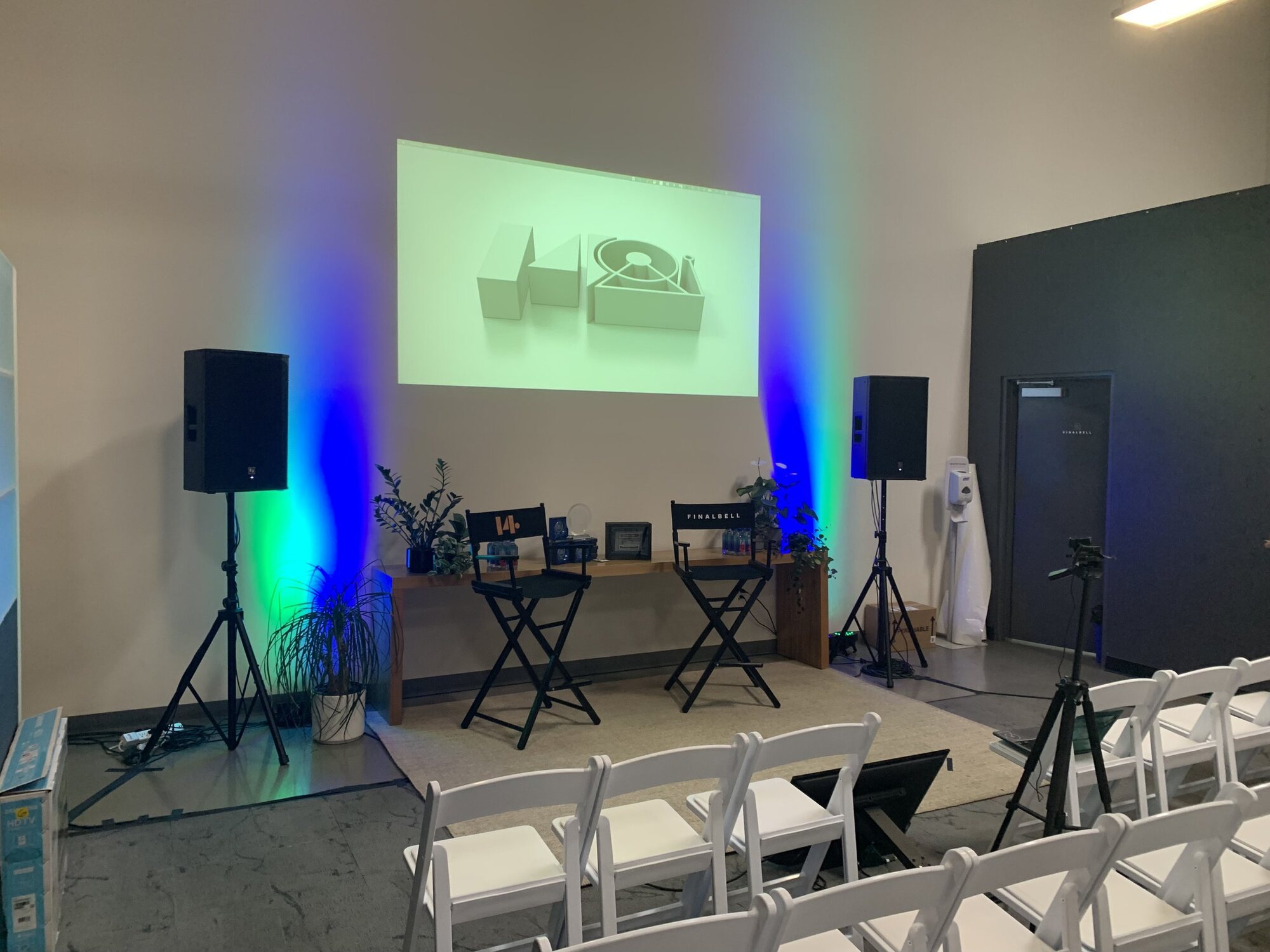What Is Aspect Ratio?
Aspect ratio is a term used to describe the relationship between the width and height of an image or display screen. It is expressed as a ratio, indicating how much wider or taller an image is in comparison to its height or width. Understanding aspect ratio is crucial in the world of projectors, as it directly affects the quality and visual experience of the projected content.
Aspect ratio is a fundamental concept in cinematography and visual arts, as it determines the shape and size of the viewing area. Different aspect ratios have been developed over time to accommodate various types of content and viewing preferences. The most common aspect ratios used in projectors are 16:9, 4:3, and 16:10.
The aspect ratio of a projector affects how the screen content appears. A widescreen aspect ratio, such as 16:9, will display content with a wider, more cinematic look, while a square aspect ratio, like 4:3, will display content with a more traditional, boxy shape. The aspect ratio chosen for a projector should align with the type of content to be displayed and the intended viewing experience.
Aspect ratio is not just limited to projectors; it also applies to other display devices, such as televisions and computer monitors. It plays a significant role in how visual content is displayed and perceived. By understanding aspect ratio and its impact, you can make informed decisions when selecting and using projectors and other display devices.
The Importance of Aspect Ratio in Projectors
Aspect ratio is crucial in projectors as it directly impacts the visual quality and overall viewing experience. Understanding the importance of aspect ratio will help you make informed decisions when selecting a projector for your specific needs.
One of the key reasons aspect ratio is important is because it determines how content is displayed. Different aspect ratios are suitable for different types of content, such as movies, presentations, or gaming. Using the correct aspect ratio ensures that the content is displayed in the intended format, without any distortion or stretching.
For example, if you’re watching a movie with a widescreen aspect ratio of 16:9 on a projector with a different aspect ratio, the image may be stretched or cropped, resulting in an altered viewing experience. On the other hand, if you have a presentation with a 4:3 aspect ratio and your projector is set to a widescreen aspect ratio, your slides may appear distorted or have black bars on the sides.
Aspect ratio also affects the immersion and cinematic experience. With a wider aspect ratio, such as 16:9, movies and video content can be displayed in their original widescreen format, providing a more engaging and visually appealing experience. On the other hand, a narrower aspect ratio, like 4:3, may be more suitable for presentations or displaying content with a lot of text.
Additionally, aspect ratio plays a role in matching the projector’s native resolution with the source material. Most projectors have a default native resolution, and if the aspect ratio of the content doesn’t align with the projector’s native resolution, the image quality may be compromised. It’s important to choose a projector with an aspect ratio that matches the majority of the content you’ll be displaying.
Overall, aspect ratio is a critical consideration when choosing a projector. It ensures content is displayed correctly, maintains visual quality, and enhances the overall viewing experience. By selecting a projector with the appropriate aspect ratio for your specific needs, you can enjoy optimal performance and avoid any display issues.
Common Aspect Ratios in Projectors
Projectors come with various aspect ratios to accommodate different types of content and viewing preferences. Let’s take a closer look at the three most common aspect ratios found in projectors:
16:9 Aspect Ratio:
The 16:9 aspect ratio, also known as widescreen, is widely used for projecting movies, television shows, and video content. It offers a broader field of view, similar to what you would experience in a movie theater. The 16:9 aspect ratio is also suitable for gaming, as many modern games are designed for widescreen displays. If you plan to watch a lot of movies or play games on your projector, a 16:9 aspect ratio would be a great choice.
4:3 Aspect Ratio:
The 4:3 aspect ratio, also referred to as standard or fullscreen, was the standard for older televisions and computer monitors. It has a more square-like shape compared to the widescreen aspect ratio. While it is less commonly used for movies and video content today, it is still popular for presentations, slide shows, and displaying content with a lot of text. If you primarily use your projector for presentations or work-related tasks, a 4:3 aspect ratio will be suitable.
16:10 Aspect Ratio:
The 16:10 aspect ratio is a compromise between the 16:9 and 4:3 aspect ratios. It offers a slightly wider display than the 4:3 aspect ratio, making it useful for both multimedia content and presentation purposes. The 16:10 aspect ratio is often preferred by professionals who need a balance between widescreen entertainment and productivity. It provides more screen real estate compared to the 4:3 aspect ratio, which can be beneficial when working on spreadsheets or multitasking.
While these are the most common aspect ratios in projectors, it’s important to note that there are other less common aspect ratios available as well. Some projectors even have adjustable aspect ratios, allowing you to switch between different ratios based on your preferences or the content being displayed.
When selecting a projector, consider the type of content you’ll be using it with and your personal preferences. Whether you’re a movie enthusiast, a presenter, or a professional needing a versatile display, choosing the right aspect ratio will ensure the best visual experience and optimal compatibility with your content.
16:9 Aspect Ratio
The 16:9 aspect ratio is widely used in projectors for its ability to deliver a cinematic and immersive viewing experience. This aspect ratio is commonly associated with widescreen televisions, movies, and high-definition content. Let’s explore the significance and advantages of the 16:9 aspect ratio in projectors.
The 16:9 aspect ratio offers a wider and more expansive display compared to the traditional 4:3 aspect ratio. With a wider aspect ratio, movies and video content can be projected in their original format without the need for cropping or stretching. This ensures that you can enjoy films just as the creators intended, with no loss of detail or altered cinematic experience.
One of the main advantages of the 16:9 aspect ratio is its compatibility with high-definition content. As most movies and TV shows are now produced in widescreen format, a projector with a 16:9 aspect ratio can display them at their native resolution, resulting in sharp, crisp, and vibrant visuals. Additionally, if you enjoy gaming on your projector, many modern video games are also optimized for the 16:9 aspect ratio, providing an immersive gaming experience.
Another benefit of the 16:9 aspect ratio is its versatility. While it’s ideal for movies and video content, it can also be used effectively for presentations and slide shows. This aspect ratio provides a wider canvas for displaying visuals and makes it easier to present information in a visually appealing and engaging manner. Whether you’re showcasing a presentation or sharing photos with family and friends, the 16:9 aspect ratio ensures a seamless and professional display.
It’s worth noting that many projectors with a 16:9 aspect ratio also support other aspect ratios, such as 4:3 or 16:10. This flexibility allows you to adjust the aspect ratio according to the type of content you’re projecting. For example, if you want to watch an older movie in its original 4:3 format, you can switch the projector to the appropriate aspect ratio without compromising on quality.
In summary, the 16:9 aspect ratio is a popular choice for projectors due to its widescreen format, compatibility with high-definition content, and versatility for both movies and presentations. Whether you’re a movie enthusiast, a gamer, or someone who frequently presents information, a projector with a 16:9 aspect ratio can provide an exceptional visual experience and enhance your multimedia content.
4:3 Aspect Ratio
The 4:3 aspect ratio, also known as the standard or fullscreen aspect ratio, was the dominant format for televisions and computer monitors for many years. While it is less commonly used in modern projectors, it still has its advantages and is especially suitable for certain types of content and applications.
The 4:3 aspect ratio has a more square-like shape compared to widescreen formats like 16:9. This aspect ratio was widely adopted during the era of standard-definition television and computer displays. It provides a balanced display area that works well for displaying text, making it particularly suitable for presentations, slide shows, and documents.
One of the benefits of the 4:3 aspect ratio is its compatibility with older content. Many older movies, TV shows, and presentations were originally produced in the 4:3 format. By using a projector with a 4:3 aspect ratio, you can display this content without any distortion or cropping. This can be particularly useful for archival purposes or if you regularly work with older media.
In addition to its compatibility with older content, the 4:3 aspect ratio also maintains a larger vertical display area compared to widescreen formats. This can be advantageous when working with applications that require a lot of vertical space, such as coding or working on spreadsheets. The extra vertical space allows for more lines of code or rows and columns of data to be visible on the screen without the need for excessive scrolling.
While the 4:3 aspect ratio is less commonly used for movies and video content today, it can still be suitable in certain situations. For example, if you primarily use your projector for presentations, the 4:3 aspect ratio provides a balanced and aesthetically pleasing format for slides and visuals. It can also be appropriate for displaying content with a significant amount of text, as it allows for more characters to be displayed per line.
Although widescreen formats have become the norm in many areas, the 4:3 aspect ratio still has its place in the world of projectors. Its compatibility with older content and its suitability for presentations and text-heavy applications make it a viable choice for certain users. When considering a projector, take into account your specific needs, the types of content you’ll be working with, and the aspect ratio that best aligns with those requirements.
16:10 Aspect Ratio
The 16:10 aspect ratio is a popular choice for projectors, offering a balance between widescreen visuals and productivity-oriented applications. It provides a display area that is slightly wider than the traditional 4:3 aspect ratio, making it well-suited for a variety of content and purposes.
The 16:10 aspect ratio offers a wider viewing area compared to the 4:3 aspect ratio, allowing for a more immersive experience when watching movies or playing games. It maintains the widescreen format commonly associated with cinematic content, providing a visually engaging experience similar to what you would find in a movie theater.
One of the advantages of the 16:10 aspect ratio is its compatibility with both widescreen content and productivity applications. It is often favored by professionals who require a larger display area for multitasking or working with complex spreadsheets, charts, or presentations. The additional horizontal space allows for better organization of information and enhances productivity by reducing the need for constant scrolling or switching between windows.
The 16:10 aspect ratio is also well-suited for graphics-oriented work, such as graphic design or video editing. It offers more screen real estate for editing and manipulating images or videos, making it easier to work with intricate details and precise adjustments.
Similar to other aspect ratios, projectors with a 16:10 aspect ratio also support content in different ratios, such as 4:3 or 16:9. This flexibility allows you to adapt the projector’s display to match the specific aspect ratio of the content being projected, ensuring optimal visual quality and compatibility.
While the 16:10 aspect ratio may not be as prevalent as the 16:9 or 4:3 formats, it offers a versatile solution that can cater to a wide range of applications and preferences. Whether you’re a professional seeking a balance between widescreen entertainment and productivity, or someone who enjoys a larger display for movies and games, a projector with a 16:10 aspect ratio can provide an optimal viewing experience and enhance your overall multimedia usage.
Choosing the Right Aspect Ratio for Your Projector
When selecting a projector, one of the crucial factors to consider is the aspect ratio. Choosing the right aspect ratio ensures that your content is displayed correctly and that you have the best viewing experience possible. Here are some considerations to help you determine the ideal aspect ratio for your projector:
1. Types of content: Think about the primary type of content you will be projecting. If you plan to watch a lot of movies or play video games, a widescreen aspect ratio like 16:9 would be a suitable choice. On the other hand, if you frequently present slideshows or work with text-heavy documents, a more square-like aspect ratio such as 4:3 might be more appropriate.
2. Source compatibility: Consider the source of your content. Most movies and TV shows are produced in a widescreen format, which makes a projector with a 16:9 aspect ratio a natural fit. However, if you have older content or use applications with a compatibility preference for the 4:3 aspect ratio, it might be worth considering a projector with that aspect ratio instead.
3. Display environment: Evaluate the physical space where the projector will be used. If you have a large screen or a dedicated home theater room, a widescreen aspect ratio can enhance the cinematic experience and take advantage of the available space. For smaller rooms or spaces where the projector needs to be placed closer to the screen, a more square aspect ratio like 4:3 or 16:10 may be preferable to avoid distortion or image stretching.
4. Future-proofing: Consider the future trends and technology. Widescreen formats like 16:9 are currently dominant in the industry, with most new content being produced in this aspect ratio. Investing in a projector with a 16:9 aspect ratio can ensure compatibility with the latest movies, games, and multimedia content. However, it’s always wise to choose a projector that supports multiple aspect ratios to future-proof your setup.
5. Personal preference: Ultimately, consider your personal viewing preferences. Some individuals simply prefer the aesthetics and immersive experience of a widescreen format, while others may have a preference for a more traditional or square-like aspect ratio.
By carefully considering these factors, you can select a projector with the optimal aspect ratio for your needs. Whether you prioritize cinematic viewing, presentation flexibility, or a balance between various content types, choosing the right aspect ratio will ensure an enjoyable and immersive visual experience with your projector.
How to Change Aspect Ratio on a Projector
Changing the aspect ratio on a projector is a straightforward process that can be done through the projector’s settings menu. The exact steps may vary depending on the make and model of your projector, but here is a general guide on how to change the aspect ratio:
1. Access the settings menu: Turn on the projector and navigate to the settings menu. This is typically done through the remote control or the buttons on the projector itself.
2. Locate the aspect ratio settings: Look for a section or option in the settings menu related to the aspect ratio. It may be labeled as “Aspect Ratio,” “Picture Size,” or something similar.
3. Select the desired aspect ratio: Once in the aspect ratio settings, you will usually have a list of available aspect ratios to choose from. Common options include 16:9, 4:3, and 16:10. Use the navigation buttons or arrow keys to highlight and select the desired aspect ratio.
4. Adjust the aspect ratio: After selecting the desired aspect ratio, you may have additional options to fine-tune or adjust the display. This can include options to stretch or zoom the image to fill the screen, or to maintain the aspect ratio without cropping or distorting the content.
5. Save the changes and exit the settings: Once you have set the desired aspect ratio and made any additional adjustments, save the changes in the settings menu. The projector will usually provide an option to confirm and save the new settings. After saving, exit the settings menu to apply the changes to the projected content.
It’s important to note that not all projectors offer the flexibility to change aspect ratios, especially in lower-cost or compact models. In some cases, a projector may have a fixed aspect ratio that cannot be adjusted. Be sure to consult the user manual or specifications of your specific projector to determine if it allows for aspect ratio changes.
Additionally, keep in mind that changing the aspect ratio may affect the image quality or cause the content to appear distorted if the aspect ratio of the input source does not match the projector’s native aspect ratio. It’s recommended to match the aspect ratio of the content you are projecting with the projector’s native aspect ratio for the best display results.
By following these steps and understanding the limitations of your projector, you can easily change the aspect ratio to best suit your content and viewing preferences.
Maintaining Aspect Ratio with Different Display Sources
When using a projector, it’s essential to maintain the correct aspect ratio to ensure that the content is displayed accurately and without distortion. However, different display sources, such as laptops, Blu-ray players, or gaming consoles, can have varying aspect ratios. Here are some tips to help you maintain the correct aspect ratio with different display sources:
1. Check the source settings: Before connecting your display source to the projector, check its settings to ensure that the output aspect ratio matches the native aspect ratio of the projector. Most devices offer display settings where you can configure the aspect ratio to match the content being displayed.
2. Adjust the projector settings: If the aspect ratio of the display source doesn’t match the native aspect ratio of the projector, you can adjust the projector’s settings to maintain the correct aspect ratio. Look for options such as “source aspect ratio,” “auto-aspect ratio,” or similar settings in the projector’s menu. By selecting the appropriate aspect ratio, the projector will automatically adjust the displayed image to match the content.
3. Use letterboxing or pillarboxing: In some cases, the aspect ratio of the content and the projector may not match. This can result in black bars appearing either on the sides (pillarboxing) or the top and bottom (letterboxing) of the projected image. While these black bars reduce the size of the displayed content, they maintain the correct aspect ratio. Instead of stretching or distorting the image, it displays the content in its original format.
4. Manually adjust the display settings: If the source and projector settings don’t align, and you want to avoid letterboxing or pillarboxing, you can manually adjust the display settings on the source device. However, be cautious as this may result in stretching or distorting the image. It’s generally recommended to maintain the native aspect ratio of the projector and use letterboxing or pillarboxing to preserve the correct image proportions.
5. Consider an external scaler or processor: In some cases, using an external scaler or video processor can help maintain the correct aspect ratio when connecting different display sources to the projector. These devices can handle aspect ratio conversion and ensure that the content is displayed accurately and without distortion. However, this is more advanced and may require additional equipment and setup.
It’s important to note that maintaining the aspect ratio with different display sources requires careful consideration and adjustment. It’s recommended to consult the manuals and settings options of both the display source and the projector to ensure proper configuration. By matching the aspect ratios and utilizing the appropriate settings or techniques, you can ensure that your projected content is displayed correctly and without any unwanted distortions or cropping.
Aspect Ratio Considerations for Different Types of Content
When it comes to projecting different types of content, it’s important to consider the aspect ratio to ensure optimal viewing and presentation experiences. Here are some aspect ratio considerations for different types of content:
1. Movies and Video Content: Movies and video content are typically created and intended to be shown in widescreen formats. The most common aspect ratio for movies is 16:9, which provides a cinematic and immersive experience. When projecting movies, it is recommended to use a projector with a 16:9 aspect ratio to display the content in its original format without any stretching or cropping.
2. Presentations and Slideshows: Presentations and slideshows often contain text, charts, and graphics. The 4:3 aspect ratio, also known as the standard or fullscreen aspect ratio, has been traditionally used for this type of content. However, widescreen aspect ratios, such as 16:9 or 16:10, are becoming more popular due to their ability to display more information and provide a visually appealing experience. Consider the type of content and the display preferences of your audience when selecting the appropriate aspect ratio for presentations and slideshows.
3. Gaming: Gaming enthusiasts often prefer a widescreen experience to enhance immersion and enjoy a wider field of view. Many modern games are optimized for widescreen displays with a 16:9 aspect ratio. If you plan to use your projector for gaming, choosing a projector with a 16:9 aspect ratio will provide a more immersive gaming experience and ensure that the game is displayed as intended by the developers.
4. Documents and Text-Based Content: When displaying documents, spreadsheets, or other text-based content, it is essential to have enough screen real estate to ensure readability. Widescreen aspect ratios, such as 16:9 or 16:10, can offer additional horizontal space, allowing for more columns or lines of text to be displayed without excessive scrolling. However, if your content is designed for a traditional letter or A4 size paper format, the 4:3 aspect ratio may be more suitable to avoid distortion or a squished appearance.
5. Photography and Artwork: Aspect ratio considerations become important when displaying photography or artwork. Different photographs and artworks may have varying aspect ratios, depending on the composition and intended presentation. It is recommended to choose a projector with adjustable aspect ratio settings or a native aspect ratio that aligns closely with the majority of your photographs or artwork to ensure accurate representation without distortion or cropping.
By considering the specific type of content you plan to project, you can make informed decisions about the appropriate aspect ratio for your projector. Whether it’s movies, presentations, gaming, or other content, selecting the right aspect ratio will help ensure that the content is displayed accurately and that viewers have an optimal viewing experience.
Conclusion
Aspect ratio is a critical factor to consider when choosing and using a projector. It determines how content is displayed and can significantly impact the visual quality and viewing experience. By understanding and selecting the correct aspect ratio, you can ensure that your projected content is displayed accurately and without distortion or cropping.
In this article, we explored the concept of aspect ratio and its importance in projectors. We discussed the common aspect ratios found in projectors, including the 16:9 widescreen format, the 4:3 standard format, and the 16:10 format that offers a balance between widescreen visuals and productivity applications. We also provided information on how to change the aspect ratio on a projector, maintain the aspect ratio with different display sources, and consider the aspect ratio for different types of content.
When selecting a projector, consider the primary type of content you will be projecting and choose the aspect ratio that aligns with your needs. Whether you’re watching movies, giving presentations, gaming, or working with text-heavy documents, selecting the appropriate aspect ratio will enhance the visual experience and ensure that your content is displayed accurately and fittingly.
Remember to consult the user manual or specifications of your specific projector model for precise instructions and settings pertaining to aspect ratio adjustment.
By taking into account the aspect ratio and understanding its implications, you can make informed decisions when choosing a projector and optimize your viewing or presentation experiences. So, whether you’re immersing yourself in the world of movies, delivering professional presentations, or enjoying the latest video games, the right aspect ratio will contribute to a visually captivating and accurate display on your projector.









